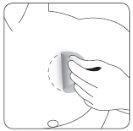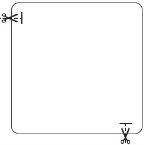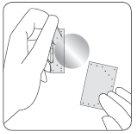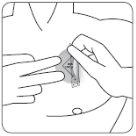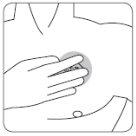
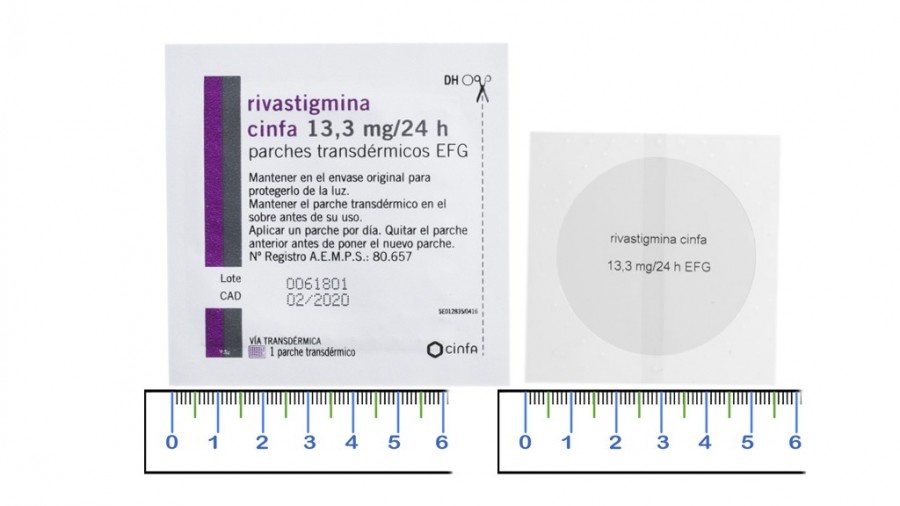
РИВАСТИГМИНА АРИСТО 13,3 мг/24 ч ТРАНСДЕРМАЛЬНЫЕ ПЛАСТЫРИ


Инструкция по применению РИВАСТИГМИНА АРИСТО 13,3 мг/24 ч ТРАНСДЕРМАЛЬНЫЕ ПЛАСТЫРИ
Введение
Прошу: информация для пациента
Ривастигмина Аресто 13,3 мг/24 ч трансдермальные пластыри ЕФГ
Прочитайте внимательно весь листок инструкции перед началом использования этого лекарства, поскольку он содержит важную информацию для вас.
- Сохраните этот листок инструкции, поскольку вам может потребоваться перечитать его.
- Если у вас есть какие-либо сомнения, проконсультируйтесь с вашим врачом или фармацевтом.
- Это лекарство было назначено только вам и не должно быть передано другим людям, даже если у них такие же симптомы, как у вас, поскольку оно может нанести им вред.
- Если вы испытываете побочные эффекты, проконсультируйтесь с вашим врачом или фармацевтом, даже если это побочные эффекты, которые не указаны в этом листке инструкции. См. раздел 4.
Содержание листка инструкции
- Что такое Ривастигмина Аресто и для чего оно используется
- Что вам нужно знать перед началом использования Ривастигмина Аресто
- Как использовать Ривастигмина Аресто
- Возможные побочные эффекты
- Хранение Ривастигмина Аресто
- Содержание упаковки и дополнительная информация
1. Что такое Ривастигмина Аресто и для чего оно используется
Активное вещество Ривастигмина Аресто - ривастигмина.
Ривастигмина относится к группе ингибиторов холинэстеразы. У пациентов с деменцией Альцгеймера определенные нервные клетки умирают в мозге, что приводит к низким уровням нейротрансмиттеров ацетилхолина (вещества, которая позволяет нервным клеткам общаться друг с другом). Ривастигмина действует, блокируя ферменты, которые разрушают ацетилхолин: ацетилхолинэстеразу и бутирилхолинэстеразу. Блокируя эти ферменты, ривастигмина позволяет увеличить ацетилхолин в мозге, помогая уменьшить симптомы болезни Альцгеймера.
Ривастигмина Аресто используется для лечения взрослых пациентов с деменцией Альцгеймера легкой или умеренной степени, прогрессивным заболеванием мозга, которое постепенно влияет на память, интеллектуальные способности и поведение.
2. Что вам нужно знать перед началом использования Ривастигмина Аресто
Не используйте Ривастигмина Аресто
- если вы аллергичны к ривастигмине (активное вещество Ривастигмина Аресто) или к любому другому компоненту этого лекарства (указанному в разделе 6).
- если вы когда-либо имели аллергическую реакцию на лекарство, подобное ривастигмине (производные карбамата).
- если у вас есть кожная реакция, которая распространяется за пределы размера пластыря, если есть местная реакция более сильная (такая как пузыри, воспаление кожи, отек) и если нет улучшения в течение 48 часов после удаления трансдермального пластыря.
Если вы находитесь в одной из этих ситуаций, сообщите об этом вашему врачу и не используйте Ривастигмина Аресто трансдермальные пластыри.
Предостережения и меры предосторожности
Проконсультируйтесь с вашим врачом перед началом использования Ривастигмина Аресто
- если у вас есть или были сердечные проблемы, такие как нерегулярный или медленный сердечный ритм, удлинение QTc, семейные анамнезы удлинения QTc, torsade de pointes или если у вас низкий уровень калия или магния в крови.
- если у вас есть или были язвы желудка.
- если у вас есть или были проблемы с мочеиспусканием.
- если у вас есть или были судороги.
- если у вас есть или были тяжелые респираторные заболевания.
- если у вас есть тремор.
- если у вас низкий вес.
- если у вас есть желудочно-кишечные реакции, такие как тошнота, рвота и диарея. Вы можете обезвожиться (потерять большое количество жидкости), если рвота или диарея продолжаются.
- если у вас есть проблемы с печенью (печеночная недостаточность).
Если вы находитесь в одной из этих ситуаций, ваш врач может считать необходимым более тщательный контроль во время лечения.
Если вы не использовали пластыри более трех дней, не накладывайте новый без предварительной консультации с вашим врачом.
Дети и подростки
Ривастигмина Аресто не должно использоваться у детей и подростков для лечения болезни Альцгеймера.
Другие лекарства и Ривастигмина Аресто
Сообщите вашему врачу или фармацевту, если вы используете, недавно использовали или можете использовать любое другое лекарство.
Ривастигмина может взаимодействовать с антихолинergicными лекарствами, некоторые из которых используются для облегчения спазмов или судорог желудка (например, дцикломин), для лечения болезни Паркинсона (например, амантадин) или для предотвращения укачивания (например, дифенгидрамин, скополамин или меклизин).
Трансдермальные пластыри Ривастигмина не должны применяться одновременно с метоклопрамидом (лекарством, используемым для облегчения или предотвращения тошноты и рвоты). Одновременное применение этих двух лекарств может вызвать проблемы, такие как жесткость конечностей и тремор рук.
Если вам необходимо пройти хирургическую операцию во время использования этого лекарства, сообщите вашему врачу, что вы его используете, поскольку оно может чрезмерно усилить эффекты некоторых миорелаксантов анестезии.
Нужно быть осторожным при использовании трансдермальных пластырей Ривастигмина Аресто вместе с бета-блокаторами (лекарствами, такими как атенолол, используемыми для лечения гипертонии, стенокардии и других сердечных заболеваний). Одновременное применение этих двух лекарств может вызвать осложнения, такие как снижение частоты сердечных сокращений (брадикардия), что может привести к обмороку или потере сознания.
Нужно быть осторожным при использовании Ривастигмина Аресто вместе с другими лекарствами, которые могут влиять на сердечный ритм или электрическую систему сердца (удлинение QT).
Беременность, лактация и фертильность
Если вы беременны или кормите грудью, считаете, что можете быть беременной или планируете стать беременной, проконсультируйтесь с вашим врачом или фармацевтом перед использованием этого лекарства.
Если вы беременны, необходимо оценить преимущества использования Ривастигмина Аресто перед возможными побочными эффектами для плода. Ривастигмина Аресто не должно использоваться во время беременности, если только это не абсолютно необходимо.
Не кормите грудью во время лечения ривастигминой трансдермальными пластырями.
Вождение и использование машин
Ваш врач сообщит вам, позволяет ли ваше заболевание вам водить машину или использовать машины безопасно. Трансдермальные пластыри Ривастигмина могут вызывать головокружение и сильную дезориентацию. Если вы чувствуете головокружение или дезориентацию, не водите машину, не используйте машины и не выполняйте другие задачи, которые требуют вашего внимания.
3. Как использовать Ривастигмина Аресто
Следуйте точно инструкциям по применению трансдермальных пластырей Ривастигмина Аресто, указанным вашим врачом. В случае сомнений проконсультируйтесь с вашим врачом или фармацевтом.
Как начать лечение
Ваш врач укажет вам наиболее подходящую дозу ривастигмина трансдермального пластыря в вашем случае.
- Обычно лечение начинается с ривастигмина 4,6 мг/24 ч.
- Рекомендуемая суточная доза составляет ривастигмина 9,5 мг/24 ч. Если эта доза хорошо переносится, ваш врач может рассмотреть возможность увеличения дозы до 13,3 мг/24 ч.
- Носите только один трансдермальный пластырь одновременно и замените пластырь на новый через 24 часа.
Во время лечения ваш врач может корректировать дозу в зависимости от ваших индивидуальных потребностей.
Если вы не использовали пластыри более трех дней, не накладывайте новый без предварительной консультации с вашим врачом. Лечение трансдермальным пластырем можно возобновить в той же дозе, если лечение не было прервано более чем на три дня. В противном случае ваш врач может назначить вам начать лечение с ривастигмина 4,6 мг/24 ч.
Трансдермальные пластыри Ривастигмина можно использовать с пищей, напитками и алкоголем.
Где накладывать трансдермальный пластырь ривастигмина
- Перед накладыванием пластыря убедитесь, что кожа чиста, суха и без волос, без порошков, масла, увлажнителя или лосьона, которые могут препятствовать прикреплению пластыря к коже, без порезов, покраснений или раздражений.
- Аккуратно удалите любой пластырь, который вы носите перед накладыванием нового.Ношение нескольких пластырей на вашем теле может привести к чрезмерному воздействию этого лекарства и быть потенциально опасным.
- Накладывайте только ОДИНпластырь в день на ОДНОЙиз возможных зон, как показано на следующих схемах:
- верхняя левая иливерхняя правая часть руки
- верхняя левая иливерхняя правая часть груди (избегая молочных желез у женщин)
- верхняя левая иливерхняя правая часть спины
- нижняя левая илинижняя правая часть спины
Каждые 24часаудалите предыдущий пластырь перед накладыванием НОВОГО пластыря на ОДНОЙ из следующих возможных зон. |
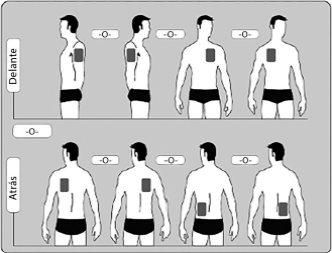
Каждый раз, когда вы меняете пластырь, удалите предыдущий пластырь перед накладыванием нового пластыря на другое место на коже (например, один день на правой стороне тела и на следующий день на левой стороне; или один день на верхней части тела и на следующий день на нижней части). Не накладывайте новый пластырь на то же место на коже в течение как минимум 14 дней.
Как накладывать трансдермальный пластырь ривастигмина
Пластыри ривастигмина тонкие, коричневого цвета и прикрепляются к коже. Каждый пластырь находится в отдельном пакете, который защищает его до тех пор, пока вы не будете готовы его накладывать. Не открывайте пакет и не удаляйте пластырь до момента накладывания.
| Аккуратно удалите существующий пластырь перед накладыванием нового. Пациенты, которые начинают лечение впервые, и пациенты, которые возобновляют лечение ривастигминой после перерыва, должны начать с второй схемы. |
| Каждый пластырь находится в отдельном защитном пакете. Открывайте пакет только тогда, когда будете готовы накладывать пластырь. Разрежьте пакет по обеим меткам ножниц, не превышая указанную линию. Разорвите пакет, чтобы открыть его. Не разрезайте весь пакет, чтобы не повредить пластырь. Удалите пластырь из пакета |
| Защитная пленка покрывает клеящую сторону пластыря. Удалите одну сторону защитной пленки, не прикасаясь пальцами к клеящей стороне пластыря. |
| Поместите клеящую сторону пластыря на верхнюю или нижнюю часть спины, на верхнюю часть руки или груди, и затем удалите вторую сторону защитной пленки. |
| Примените сильное давление на пластырь к коже ладонью руки в течение как минимум 30 секунд и убедитесь, что края хорошо прикреплены. |
ВАЖНО:
- Удалите предыдущий пластырь перед накладыванием НОВОГО.
- Накладывайте только один пластырь в день.
- Не разрезайте пластырь на части.
- Примените сильное давление на пластырь к коже ладонью руки в течение как минимум 30секунд.
Если это помогает, вы можете написать на пластыре, например, день недели, с помощью тонкого маркера.
Вы должны носить пластырь постоянно до момента его замены на новый. Когда вы накладываете новый пластырь, вы можете попробовать разные зоны, чтобы найти те, которые будут наиболее удобными и где одежда не будет раздражать пластырь.
Как удалить трансдермальный пластырь ривастигмина
Аккуратно потяните за один из краев пластыря, чтобы медленно удалить его с кожи. Если остаются клеевые остатки на коже, смочите область теплой водой и мягким мылом или используйте детское масло, чтобы удалить их. Не используйте алкоголь или другие растворители (например, жидкости для снятия лака или другие растворители).
После удаления пластыря руки должны быть вымыты с мылом и водой. В случае контакта с глазами или если глаза покраснели после обращения с пластырем, необходимо сразу промыть их большим количеством воды и обратиться за медицинской консультацией, если симптомы не пройдут.
Можете ли вы носить трансдермальный пластырь ривастигмина во время купания, плавания или воздействия солнца?
- Купание, плавание или душ не должны повлиять на пластырь. Убедитесь, что он не отсоединяется частично во время этих занятий.
- Не подвергайте пластырь воздействию внешних источников тепла (например, интенсивного солнечного света, сауны, солярия) в течение длительного времени.
Что делать, если пластырь отсоединился
Если пластырь отсоединился, накладывайте новый на остаток дня и замените его на следующий день в обычное время.
Когда и как долго необходимо носить трансдермальный пластырь ривастигмина?
- Чтобы получить пользу от лечения, необходимо накладывать новый пластырь каждый день, желательно в одно и то же время.
- Носите только один пластырь ривастигмина одновременно и замените пластырь на новый через 24 часа.
Если вы использовали больше Ривастигмина Аресто, чем должны были
Если вы случайно накладывали больше одного пластыря, удалите все пластыри с кожи и сообщите об этом вашему врачу или позвоните в Центр токсикологической информации, телефон: 91 562 04 20 (указав лекарство и количество, принятое). Возможно, вам потребуется медицинская помощь. Некоторые люди, которые случайно приняли слишком большое количество ривастигмина, испытывали тошноту, рвоту, диарею, повышение артериального давления и галлюцинации. Также могут возникнуть замедление сердечного ритма и обморок.
Если вы забыли использовать Ривастигмина Аресто
Если вы обнаружили, что забыли накладывать пластырь, накладывайте его сразу же. На следующий день накладывайте следующий пластырь в обычное время. Не накладывайте два пластыря, чтобы компенсировать пропущенный.
Если вы прервете лечение Ривастигмина Аресто
Сообщите вашему врачу или фармацевту, если вы прекратите использовать пластыри.
Если у вас есть какие-либо другие вопросы о использовании этого лекарства, проконсультируйтесь с вашим врачом или фармацевтом.
4. Возможные побочные эффекты
Как и все лекарства, ривастигмина пластыри могут вызывать побочные эффекты, хотя не все люди испытывают их.
У вас могут быть побочные эффекты чаще при начале лечения или когда увеличивается доза. Обычно побочные эффекты медленно исчезают, когда ваш организм привыкает к лекарству.
Если вы заметите любой из следующих побочных эффектов, которые могут быть тяжелыми, снимите пластырь и немедленно сообщите об этом вашему врачу:
Частые(могут повлиять до 1 из 10 человек)
- Потеря аппетита
- Чувство головокружения
- Чувство беспокойства или онемения
- Неспособность контролировать мочеиспускание (недержание мочи)
Редкие(могут повлиять до 1 из 100 человек)
- Проблемы с сердечным ритмом, такие как замедленный сердечный ритм
- Видение вещей, которые на самом деле не существуют (галлюцинации)
- Язва желудка
- Обезвоживание (потеря большого количества жидкости)
- Гиперактивность (высокий уровень активности, беспокойство)
- Агрессивность
Очень редкие(могут повлиять до 1 из 1000 человек)
- Падения
Чрезвычайно редкие(могут повлиять до 1 из 10 000 человек)
- Жесткость рук и ног
- Дрожание в руках
Неизвестные(не могут быть оценены на основе доступных данных)
- Аллергическая реакция в месте применения пластыря, такая как пузыри или воспаление кожи
- Ухудшение симптомов болезни Паркинсона - таких как дрожание, жесткость и трудности с движением
- Синдром Писа (состояние, характеризующееся непроизвольным сокращением мышц и аномальным наклоном тела и головы в сторону)
- Воспаление поджелудочной железы - симптомы включают боль в верхней части живота, часто сопровождаемую чувством головокружения (тошнотой или рвотой)
- Быстрый или нерегулярный сердечный ритм
- Высокое кровяное давление
- Эпилептические приступы (судороги)
- Расстройства печени (желтуха кожи, желтуха белого глаза, необычное потемнение мочи или необъяснимая тошнота, рвота, усталость и потеря аппетита)
- Изменения в анализах, показывающих функцию печени
- Чувство беспокойства
- Кошмары
Если вы заметите любой из побочных эффектов, перечисленных выше, снимите пластырь и немедленно сообщите об этом вашему врачу.
Другие побочные эффекты, испытанные при приеме капсул или раствора для приема внутрь ривастигмины, и которые могут возникнуть при использовании пластырей:
Частые(могут повлиять до 1 из 10 человек)
- Избыточная слюна
- Потеря аппетита
- Чувство беспокойства
- Чувство общего недомогания
- Дрожание или чувство путаницы
- Увеличение потоотделения
Редкие(могут повлиять до 1 из 100 человек)
- Нерегулярный сердечный ритм (например, быстрый сердечный ритм)
- Трудности с засыпанием
- Случайные падения
Очень редкие(могут повлиять до 1 из 1000 человек)
- Эпилептические приступы (судороги)
- Язва в кишечнике
- Боль в груди - вероятно, вызванная спазмом сердца
Чрезвычайно редкие(могут повлиять до 1 из 10 000 человек)
- Высокое кровяное давление
- Воспаление поджелудочной железы - симптомы включают сильную боль в верхней части живота, часто сопровождаемую чувством головокружения (тошнотой или рвотой)
- Кровотечение в желудочно-кишечном тракте - проявляется как кровь в кале или при рвоте
- Видение вещей, которые не существуют (галлюцинации)
- Некоторые люди, которые были сильно больны, имели разрыв части пищеварительного тракта, соединяющего рот с желудком (эзофагус)
Сообщение о побочных эффектах
Если вы испытываете любой побочный эффект, проконсультируйтесь с вашим врачом, даже если это возможный побочный эффект, который не указан в этом описании. Вы также можете сообщить об этом напрямую через систему фармакологического надзора за лекарствами для человека, веб-сайт: www.notificaRAM.es. Сообщая о побочных эффектах, вы можете способствовать предоставлению более полной информации о безопасности этого лекарства.
5. Хранение Ривастигмины Аресто
- Храните это лекарство вне поля зрения и досягаемости детей.
- Не используйте это лекарство после даты истечения срока годности, указанной на упаковке и на пакете после CAD. Дата истечения срока годности - последний день месяца, указанного.
- Храните пластырь в пакете до его использования.
- Не используйте любой пластырь, если вы заметите, что он поврежден или имеет признаки вскрытия.
- После снятия пластыря сложите его пополам с липкой стороной внутрь и прижмите. После этого положите его в оригинальный пакет и выбросьте. После снятия пластыря не трогайте глаза и тщательно мойте руки с водой и мылом.
Лекарства не должны выбрасываться в канализацию или в мусор. Поместите упаковку и лекарства, которые вам больше не нужны, в специальный пункт приема в аптеке. Если у вас есть сомнения, спросите у вашего фармацевта, как избавиться от упаковки и лекарств, которые вам больше не нужны. Таким образом, вы поможете защитить окружающую среду.
6. Содержание упаковки и дополнительная информация
Состав Ривастигмины Аресто
Активное вещество - ривастигмина.
Каждый пластырь выпускает 13,3 мг ривастигмины в течение 24 часов, имеет размер 12,8 см2 и содержит 19,2 мг ривастигмины.
Другие компоненты:
Поддерживающий слой: слой полиэтилена/термопластичной смолы/полиэстера, покрытый алюминием
Активный слой: поли[(2-этилгексил)акрилат, винилацетат]
Клейкая матрица: полиизобутен среднего и высокого молекулярного веса, коллоидная безводная силика, легкая жидкая парафина
Слой выпуска: полимерная пленка, покрытая фторполимером
Печатная краска оранжевого цвета
Внешний вид продукта и содержание упаковки
Тонкий трансдермальный пластырь круглой формы. Внешний слой имеет коричневый цвет и напечатан оранжевой краской: "РИВ-ТДС 13,3 мг/24 ч".
Каждый пакет содержит один трансдермальный пластырь.
Ривастигмина Аресто 13,3 мг/24 ч трансдермальные пластыри ЕФГ выпускаются в упаковках, содержащих 7 или 30 пакетов, и в мультиупаковках, содержащих 60 (2х30) или 90 (3х30) пакетов.
Возможно, не все размеры упаковок будут продаваться.
Владелец разрешения на маркетинг
Аристо Фарма Иберия, С.Л.
с/ Солана, 26
28850 – Торрехон де Ардос
Испания
Производитель
Луе Фарма АГ
Ам Виндфельд, 35
83714 Мизбах, Германия
Или
Блюфарма Индустрия Фармацевтика, С.А.
Сан-Мартинью-ду-Бишпу
3045-016 Коимбра
Португалия
Это лекарство разрешено в государствах-членах Европейского экономического пространства под следующими названиями:
Германия Демелора 13,3 мг/24 часа Трансдермальный пластырь
Испания Ривастигмина Аресто 13,3 мг/24 ч трансдермальные пластыри ЕФГ
Италия Демелора Демелора 13,3 мг/24 ч
Нидерланды Ривастигмина Ауробиндо 13,3 мг/24 ч, Пластырь для трансдермального использования
Португалия Ривастигмина Блюфарма
Дата последнего пересмотра этого описания:февраль 2025
Подробная и актуальная информация о этом лекарстве доступна на сайте Агентства по лекарствам и медицинским изделиям Испании (АЕМПС) http://www.aemps.gob.es/
- Страна регистрации
- Активное вещество
- Требуется рецептДа
- Производитель
- Информация носит справочный характер и не является медицинской рекомендацией. Перед приемом любых препаратов проконсультируйтесь с врачом. Oladoctor не несет ответственности за медицинские решения, принятые на основе этого контента.
- Аналоги РИВАСТИГМИНА АРИСТО 13,3 мг/24 ч ТРАНСДЕРМАЛЬНЫЕ ПЛАСТЫРИФорма выпуска: ТРАНСДЕРМАЛЬНЫЙ ПЛАСТЫРЬ, 13,3 мг/24 чАктивное вещество: РивастигминПроизводитель: Esteve Pharmaceuticals S.A.Требуется рецептФорма выпуска: ТРАНСДЕРМАЛЬНЫЙ ПЛАСТЫРЬ, 4,6 мг/24 чАктивное вещество: РивастигминПроизводитель: Esteve Pharmaceuticals S.A.Требуется рецептФорма выпуска: ТРАНСДЕРМАЛЬНЫЙ ПЛАСТЫРЬ, 9,5 мг/24 чАктивное вещество: РивастигминПроизводитель: Esteve Pharmaceuticals S.A.Требуется рецепт


